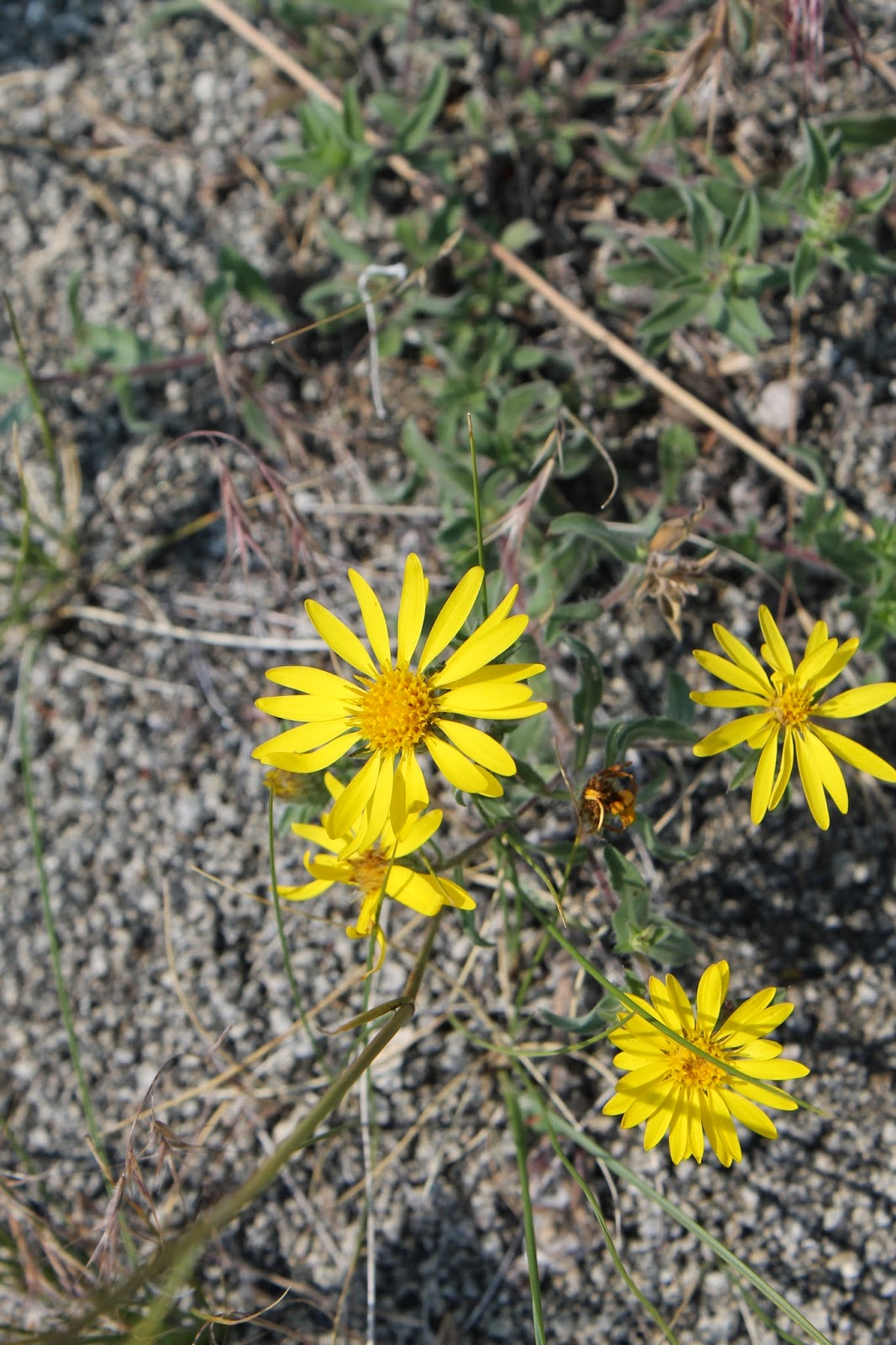One of the events at summer celebration included a talk at the Fort Benton Interpretive Center which helped me to understand the complex landscape that I was looking at, while allowing me to see the marks made over time by the Earth's tumultuous past. I was excited to have the opportunity to visit the Loma, Montana Earth Science Museum, where I took a private tour of an impressive collection of minerals. These two trips energized my already enthusiastic, yet amateur geological mind.
For a day trip, I was taken on a tour of the surrounding landscape, en route to Lost Lake. Located in the Shonkin Sag, Lost Lake sits approximately 250 feet below the surface of the ground, and is surrounded by exotic rock formations that stick out of the otherwise rolling, grassy landscape. The site carries the imprint of the receding glacial ice during the Ice Age, where water collected in the Sag and flowed over the edge of the enormous cliffs and then poured into Lost Lake, creating magnificent waterfalls.
We received special permission to access the site, as Lost Lake is located on privately owned land.
Driving up the long dirt road, I was full of anticipation. I wasn't sure what I might see, but was thrilled by the landscape, the sky, and the view of the mountains in the distance.
Strangely shaped rock formations began to transform into ancient figures that appeared as if in conversation with one another. The entire site was mysterious, emitting an ancient, and primitive air. I began to feel as if I had somehow been transported back in time, or had suddenly entered a scene from Jurassic Park or Planet of the Apes.
The power of the earth and rocks to be able to silently speak of time and history, amazes me, making me feel as if I am connected to them on a level that I often have no words for. It is something ancient, unknown, yet familiar at the same time, and here at Lost Lake they were speaking volumes.
We made our way carefully (and avoided stepping on any hidden rattlesnakes) towards the edge of the lake. As we walked through the grass, weaving around the silhouetted stone figures I began to notice the variety of plants and flowers that were peeking out from between the rocks and grasses.
We approached the cliffs, surprised a few rabbits who were nestled in the shade of the rocks, and perched ourselves high above the breathtaking scene.
The panorama was stunning, completely isolated in the landscape while studded with only one visible farmhouse, and our parked truck far off in the distance.
I began to wind my way along the cliff's edge, investigating the eclectic variety of plant life growing high above the lake. These plants were perhaps the only indication that time had not in fact stopped in this place, and that the cycle of their growth had continued throughout the centuries under the impenetrable gaze of these ancient geological formations.
I began to notice recognizable plants that were present in my own garden. Here, where they grew wild among the rocks they were slightly different; miniature even, like the Monarda (Bee Balm), and blue Campanula pictured below.
I even noticed traces of Yarrow, and even a miniature type of Lupine.
As I continued my exploration, I became more and more intrigued by the variety of wildflowers growing in this arid and extreme climate.
I was drawn in to the microcosmic world of lichens that resided on their rocky foundations, orange, mustard yellow, lime green, and sage colored, they began to look like little rock paintings.
After a few failed attempts at trying to tear myself away from this wondrous place, I managed to make my way, with cactus flowers lining the path, back to the truck.
We headed towards the Highwood Mountains, where the rocky terrain started to become green with trees, and fence lined farms with green rolling hills were speckled with grazing cattle. The natural walls of stone that could be seen along the hills were evidence of prehistoric igneous intrusions, yet felt very much like the abandoned ruins of some ancient civilization.
We made our way to a hidden creek where I was able to set my feet on the wet rocks, and continue with my botanical explorations. I spotted beautiful wildflowers and wild mint growing along the creek, in between the rocks.
So then we made our way back, along the long seemingly infinite roads, under the vast sky, through endless green wheat fields that shimmered and danced in the wind.
Note: I have discovered a wonderful article detailing the history and geology of Lost Lake and the Shonkin Sag area. Please visit Last Best News for more information.












































No comments:
Post a Comment